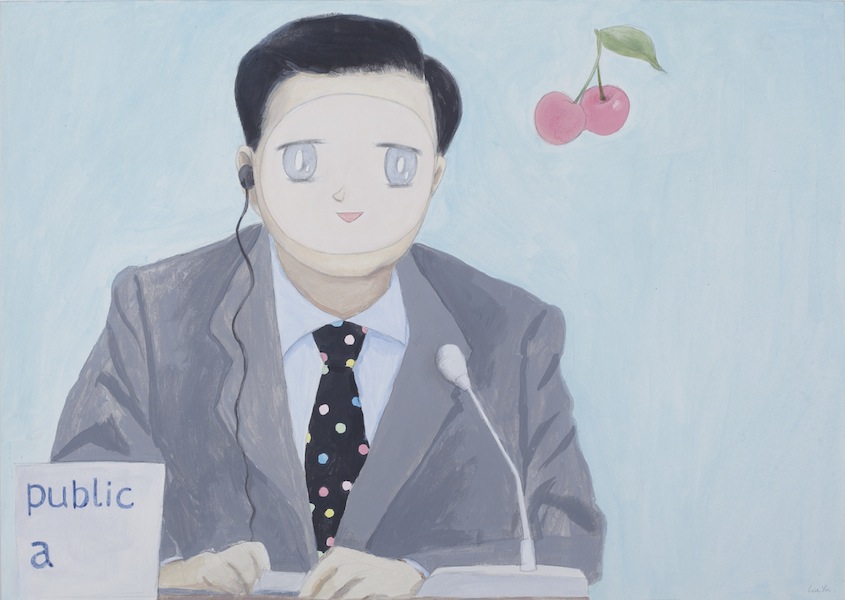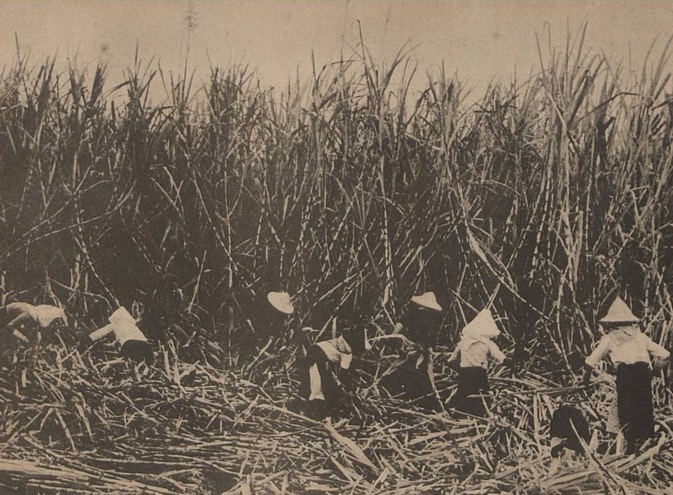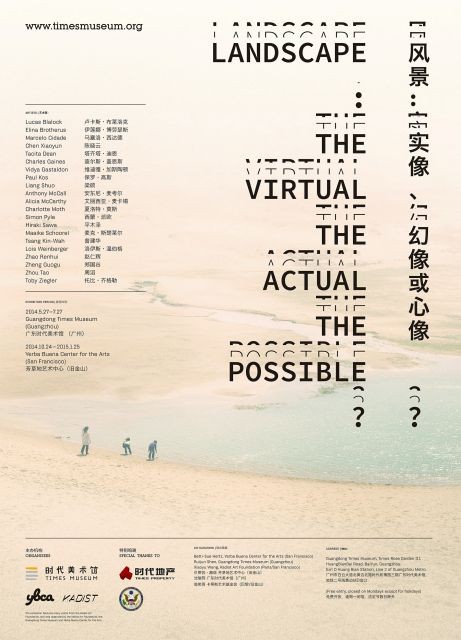
© » KADIST
Yin-Ju Chen
Drawing & Print (Drawing & Print)
This work includes sketches for Extrastellar Evaluations , the project she produced at Kadist. Extrastellar Evaluations introduces Plato’s mythical state of Atlantis as the theoretical birthplace of conceptual art. Well-known and obscure epistemological notions from the annals of cosmology and mysticism guided and informed her research in the Bay Area during the Kadist residency at the beginning of 2016.

© » KADIST
Yin-Ju Chen
One Universe, One God, One Nation was inspired by Hannah Arendt’s analysis of space exploration and by the astrological horoscope of Chinese political and military leader Chiang Kai-shek (1887-1975). Chiang was born with the sun in Scorpio and at the Ninth House, moon in Aries, and ascendant in Capricorn, signifying an individual who is headstrong, intense, and persistent, with a desire for leadership. Yin-Ju juxtaposes images of outer space, war, and subservient masses, calling attention to how the dictator’s violence and charismatic power over the crowd was predicted by his particular astrology.

© » KADIST
Yin-Ju Chen
Extrastellar Evaluations is a multimedia installation produced during Yin-Ju Chen’s residency at Kadist San Francisco in the spring of 2016. Chen’s project departs from a 19th century theory popular within Western biogeography that posited the existence of a “lost land” or ancient continent called Lemuria that had sunk beneath the Indian and Pacific Ocean due to cataclysmic geological change. As a result, its inhabitants, the Lemurians, found refuge in Mount Shasta, California.

© » KADIST
Yin-Ju Chen
Through a semi-fictional approach, Extrastellar Evaluations envisions a version of history in which alien inhabitants, the Lemurians, lived among humans under the guise of various renowned conceptual and minimal artists in the 1960s (Carl Andre, Mel Bochner, and James Turrell to name a few). If humans interpreted and appropriated the geometric-shaped works they created as conceptual and minimalist artworks, the objects were in fact transmission devices the Lemurians used to report back on human actions to their mother planet. The video takes the form of a channeled message from Adama, High Priest and spiritual leader of the Lemurians.

© » KADIST
Wong Wai Yin
Drawn from the widely circulated images of protests around the world in support of women rights and racial equality, the phrase I can’t believe we are still protesting is both the title of Wong Wai Yin’s photographic series and a reference to similar messages seen on protest signages. The artist used found images from the internet, including a viral photo of an elderly woman who took part in the 2016 “Black Monday” strike against a proposed anti-abortion law in Poland, and another image taken the same year of a group of protestors in the United Kingdom, rallying for the Black Lives Matter movement. Drawing parallels with Hank Willis Thomas’s I Am a Man (2013) painting in the KADIST Collection, Wong employs the visual language and terminology of mass media, specifically borrowing images from protests on civil rights issues.

© » KADIST
Wong Wai Yin
In this work the artist stages a humorously violent “intervention” against male-dominated cultures of art production in present-day China. For this video, Wong accompanied six male friends from art school to a group show of their work titled “Inside Looking Out” at Osage Gallery in Beijing. Throughout her visit, she was rarely acknowledged for her own creative accomplishments and was more frequently introduced as an artist’s girlfriend, and often without name.

© » KADIST
Wong Wai Yin
Drawn from the widely circulated images of protests around the world in support of women rights and racial equality, the phrase I can’t believe we are still protesting is both the title of Wong Wai Yin’s photographic series and a reference to similar messages seen on protest signages. The artist used found images from the internet, including a viral photo of an elderly woman who took part in the 2016 “Black Monday” strike against a proposed anti-abortion law in Poland, and another image taken the same year of a group of protestors in the United Kingdom, rallying for the Black Lives Matter movement. Drawing parallels with Hank Willis Thomas’s I Am a Man (2013) painting in the KADIST Collection, Wong employs the visual language and terminology of mass media, specifically borrowing images from protests on civil rights issues.

© » KADIST
Wong Wai Yin
Drawn from the widely circulated images of protests around the world in support of women rights and racial equality, the phrase I can’t believe we are still protesting is both the title of Wong Wai Yin’s photographic series and a reference to similar messages seen on protest signages. The artist used found images from the internet, including a viral photo of an elderly woman who took part in the 2016 “Black Monday” strike against a proposed anti-abortion law in Poland, and another image taken the same year of a group of protestors in the United Kingdom, rallying for the Black Lives Matter movement. Drawing parallels with Hank Willis Thomas’s I Am a Man (2013) painting in the KADIST Collection, Wong employs the visual language and terminology of mass media, specifically borrowing images from protests on civil rights issues.

© » KADIST
Wong Wai Yin
Drawn from the widely circulated images of protests around the world in support of women rights and racial equality, the phrase I can’t believe we are still protesting is both the title of Wong Wai Yin’s photographic series and a reference to similar messages seen on protest signages. The artist used found images from the internet, including a viral photo of an elderly woman who took part in the 2016 “Black Monday” strike against a proposed anti-abortion law in Poland, and another image taken the same year of a group of protestors in the United Kingdom, rallying for the Black Lives Matter movement. Drawing parallels with Hank Willis Thomas’s I Am a Man (2013) painting in the KADIST Collection, Wong employs the visual language and terminology of mass media, specifically borrowing images from protests on civil rights issues.

© » KADIST
Chen Shaoxiong
After engaging primarily with video and photography for more than a decade, Chen turned to painting to explore the issue of urban change and memories—both personal and collective. This “return to origin” reveals an interesting critical reflection on the interactive relation between outside change and internal reflection, and the possibility for more experimental approaches that revive “traditional media.” For Ink Diary , Chen recorded his daily life and impressions within a rapidly-changing urban setting in ink wash paintings which he then turned into an animated film. The complex result of this simple process is both highly innovative and reflective of modernization.

© » KADIST
Xiaoyun Chen
In the video work Drag, a man in a dark room pulls on the end of a rope. In midst of sounds of heavy breathing, the camera presents alternating scenes of a man and the shadow of a man wearing a long, pointed hat cast against a wall. Insinuating a sinister mood, the man and the shadow struggle to control the scene through alternating tugs and releases of a rope.

© » KADIST
Chen Shaoxiong
After engaging primarily with video and photography for more than a decade, Chen turned to painting to explore the issue of urban change and memories—both personal and collective. This “return to origin” reveals an interesting critical reflection on the interactive relation between outside change and internal reflection, and the possibility for more experimental approaches that revive “traditional media.” Chen’s series Collective Memories depicts some of the most important architectural works and urban sites in modern Chinese society, especially those related to the history of revolutions. Instead of reproducing the images himself, Chen invited the public to participate in their making by using their fingers to paint directly on the paper or canvas.

© » KADIST
Chen Zhexiang
In the video work Any Resemblance is Coincidental , CHEN Zhexiang mined portraits of real Asian criminals that were abandoned on the Internet. In order to form a database of the portraits, he saved the files under the original names retrieved from the Internet. CHEN used digital facial recognition technology to build a lexicon of the criminals’ facial characteristics in order to analyze them.

© » KADIST
Xiaoyun Chen
The central point of Vanishing Point is the most direct physiological reaction of the body to the environment. Chen Xiaoyun has added a written narrative and a poetic quality to his works. Image fragments containing different pieces of information are linked together by the text, their interplay producing a synesthesia effect.

© » KADIST
Xiaoyun Chen
The image of rusted nails, nuts and bolts as shrapnel sandwiched between a fried Chicken burger highlights the contrast between decadence and destruction. Chen emphasizes the direct sensational impact of his work to allow his viewer to question the boundary between reality and art. The image of nails as food harks at a visceral relationship with the title, which cries the tone of a manifesto.

© » KADIST
Xiaoyun Chen
The lengthy titles in Chen Xiaoyun’s work often appear as colophons to his photographs that invite the viewer to a process of self realization through contemplating the distance between word and image. Near his studio, Chen often walks over fallen branches in late autumn and sense their existence. Thus, his placing them in diverse contexts builds a “narrative Ariadne’s thread” where the branches become “the language of things” intertextually cohering his oeuvre.

© » KADIST
Xiaoyun Chen
State Terrorism in the ultimate form of Pre-Raphaelite Brotherhood features a portrait of the artist wearing a zipped utilitarian jacket reminiscent of a worker’s uniform, with one arm behind his back as if forced to ingest a bundle of stick—a literal portrayal to the definition of fascism. The title alludes to the Pre-Raphaelite notion of a brotherhood based on “truth to nature.” Censorship of the mouth and indigestion of freshly cut stalks, central to Chen’s language of tree branches, feeds back provocatively to the title’s suggestion of “state terrorism.” However, one must resist seeking symbolic meaning in the image as Chen’s focus is on the direct visual impact of the absurd act portrayed.

© » KADIST
I-Hsuen Chen
Drawing & Print (Drawing & Print)
Part of the series Still Life Analysis II: The Island , the two photographs The Objects under the Civic Boulevard and A Yellow Blanket on a Wooden Pallet feature household objects of vagrants living beneath the Taipei’s Civic Boulevard expressway. Such objects include trash, unidentified discarded objects, and plants. For the artist, the underside of Civic Boulevard resembles a subtropical island with its artificial stones and potted plants decor.

© » KADIST
Chen Chieh-Jen
Empire’s Borders II – Passage and Empire’s Borders II – Workers are from the three-channel film installation Empire’s Borders II – Western Enterprise, Inc. (2010), which takes as its point of departure the political context of the 1950s and the Cold War, when American interests in Taiwan overlapped with the Chinese civil war. Cooperating with the Chinese Kuomintang, the American CIA established something called Western Enterprises, an agency whose main tasks included training an anti-Communist National Salvation Army (NSA) for a surprise attack on Communists in mainland China and establishing Taiwan as a base for anti-Communist operations in Southeast Asia. Narrated from the point of the view of the artist’s father, once a member of the NSA, the project interweaves personal experience with historical events.

© » KADIST
Chen Chieh-Jen
Empire’s Borders II – Passage and Empire’s Borders II – Workers are from the three-channel film installation Empire’s Borders II – Western Enterprise, Inc. (2010), which takes as its point of departure the political context of the 1950s and the Cold War, when American interests in Taiwan overlapped with the Chinese civil war. Cooperating with the Chinese Kuomintang, the American CIA established something called Western Enterprises, an agency whose main tasks included training an anti-Communist National Salvation Army (NSA) for a surprise attack on Communists in mainland China and establishing Taiwan as a base for anti-Communist operations in Southeast Asia. Narrated from the point of the view of the artist’s father, once a member of the NSA, the project interweaves personal experience with historical events.

© » KADIST
James T. Hong
Lessons of the Blood by James T. Hong pieces together interviews, extensive archival and field research, and TV footage addressing Japan’s use of biological warfare and experimentation on Chinese prisoners during World War II, as well as the revisionism of the Japanese government and Chinese survivors’ attempts to live with this horrific history and to find justice. Co-written, directed, edited and produced with Yin-Ju Chen, whose work is also represented in the Kadist collection, Lessons of the Blood is a meditation on propaganda, the ways in which national mythologies can literally infect and poison the most vulnerable among us, and the legacy of World War II in China, presented through the testimonies of survivors, academics, medical experts, nationalists and activists. The film locates its genesis in the publication of the New History Textbook in Japan in 2000, which infamously glossed over the Japanese Empire’s wartime atrocities, sparking rage and violent protests in China and South Korea in 2005.

© » KADIST
Mimian Hsu Chen
In Hsu’s work, Colonia China (2014), the artist documents a Chinese cemetery of Costa Rica’s Limón Province, along the country’s Caribbean coast. Serving as the final resting place for Chinese migrants who came to Coast Rica during the late nineteenth century as indentured laborers working to construct the Transatlantic Railroad, the Colonia China speaks to a long but divided history. Hsu’s photographs of the burial ground also echo her interest in typography, with blocky black lettering and painted Chinese characters marking the cemetery as a space belonging to two different worlds.
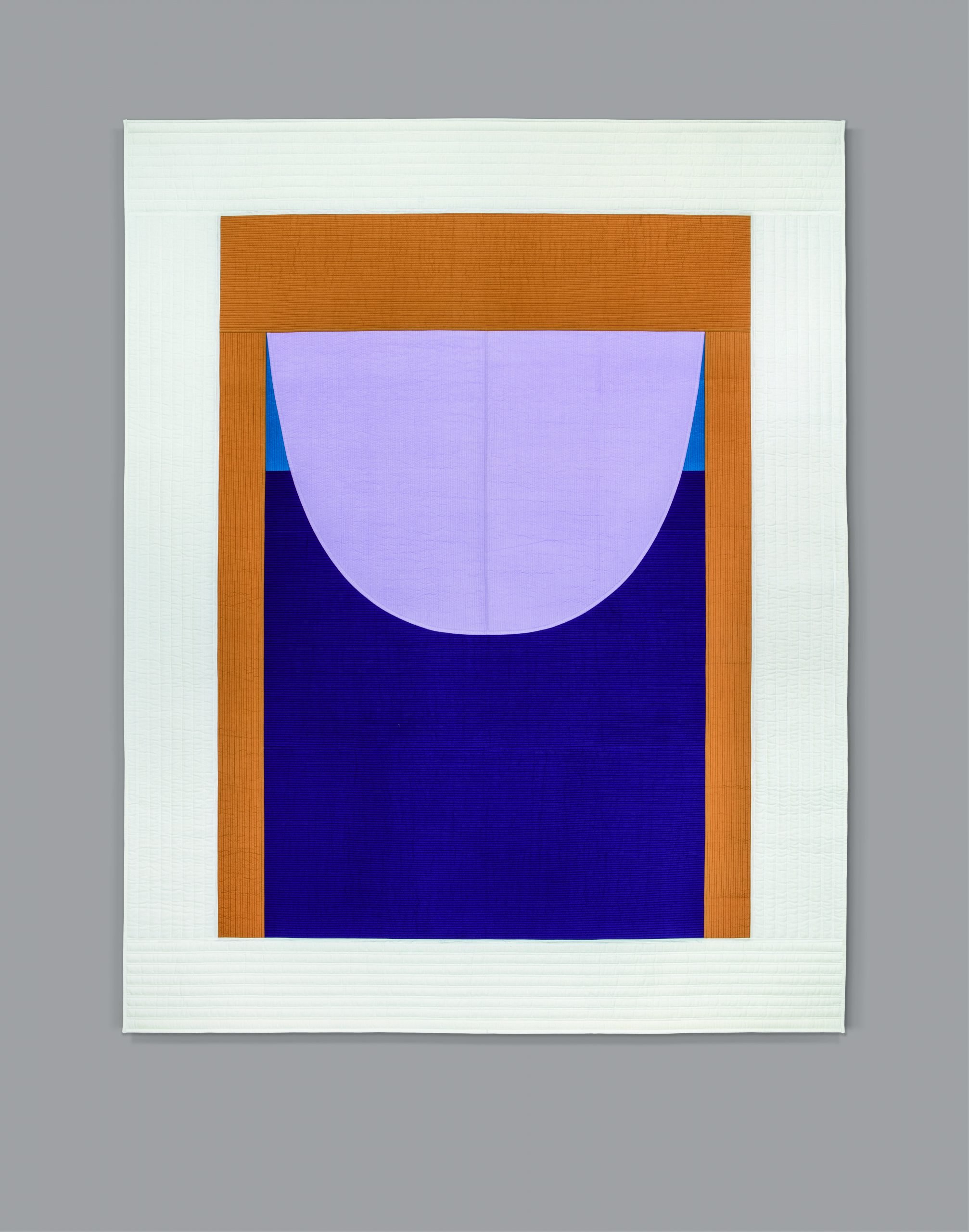
© » KADIST
Seulgi Lee
The Korean title for U: Repair the cowshed after losing the cow = Too late is —a famous Korean proverb meaning “you are doing something when you are already late to do it”. This work by Seulgi Lee is a nubi (traditional Korean quilt) blanket project that shows Korean proverbs expressed as geometric shapes. Nubi blankets were used as single sheet summer blankets in Korean households until the 1980s.

© » KADIST
Yan Xing
Sexy shows Yan Xing unsuccessfully trying to reach orgasm in freezing temperatures among the falling rocks and howling winds of a precarious canyon. His erotic failure leaves the voyeur-viewer unfulfilled and disappointed. The work explores notions of identity, masculinity, sexuality, voyeurism, and cultural taboos.

© » KADIST
Ozawa Tsuyoshi
Dr. N Song belongs Ozawa’s body of work The Return of Dr. N in which he follows a humorous fictional character based upon the historical figure Dr. Hideyo Noguchi who researched yellow fever in Ghana in 1927. Though Dr. Noguchi was known for his unruly temper and behavior and many of his discoveries were erroneous, he was widely revered in Japanese society. Ozawa’s Dr. N story explores links between Japan and Africa, past and present, fact and fiction, through the commissioned work of Ghanaian painters and musicians working in popular African styles.
Xiaoyun Chen
- location: Hangzhou, China
- year born: 1971
- gender: male
- nationality: Chinese
- home town: Hubei Province, China
Wong Wai Yin
Wong Wai Yin is an interdisciplinary artist who experiments with a variety of media ranging from painting, sculpture, collage, performance, video, installations and photography...
Yin-Ju Chen
- year born: 2011
- gender: female
- nationality: American & Taiwanese
Chen Shaoxiong
- location: Beijing
- location: Guangzhou, China
- year born: 1962
- gender: male
- nationality: Chinese
- home town: Shantou, Guangdong Province, China
Chen Chieh-Jen
- location: Taipei, Taiwan
- year born: 1960
- gender: male
- nationality: Chinese
- home town: Taoyuan, Taiwan
Chen Zhexiang
CHEN Zhexiang is a digital media artist and director of animation...
Hong-Kai Wang
Wang is an artist working primarily with sound...
Seulgi Lee
Seulgi Lee’s artistic references range from anthropological materials, archetypical linguistic elements, vernacular culture, handcrafts tradition, to the graphic culture of animistic belief found in diverse locals around the world...
I-Hsuen Chen
I-Hsuen Chen started focusing on visual arts in the late 2000s after working as a professional opera and choir singer in Taiwan...
Mimian Hsu Chen
Costa Rica-based artist Mimian Hsu works with photography, documents, typography, and objects to construct site-specific installations, performances, and projects that explore intersecting cultural identities...
James T. Hong
James T...
Ozawa Tsuyoshi
Ozawa Tsuyoshi is a Japanese conceptual artist who constructs satirical takes on history...
Yan Xing
- location: Beijing, China
- year born: 1986
- gender: male
- nationality: Chinese
- home town: Chongqing, China
Yangjiang Group
Zheng Guogu founded the artistic group Yangjiang Group in 2002 with Chen Zaiyan (b...
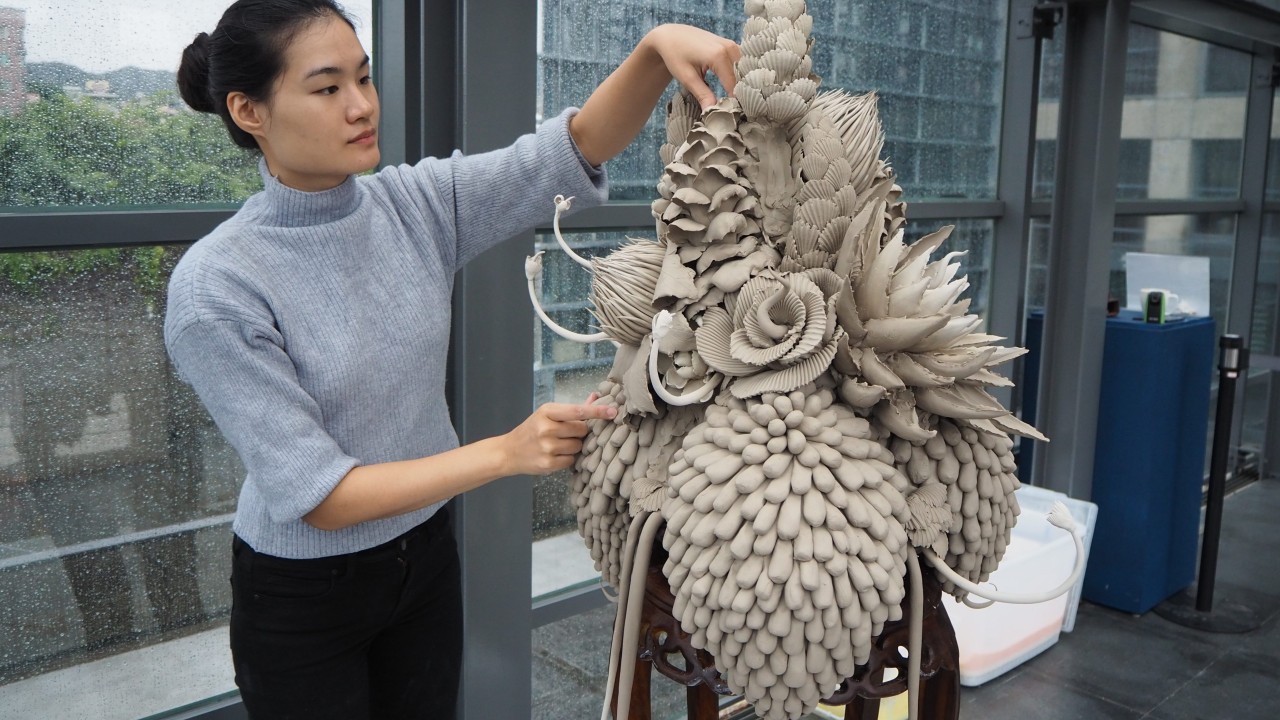
© » SOUTH CHINA MORNING POST
about 3 months ago (02/01/2024)
Why these ephemeral clay artworks by ceramicist Ruth Ju-shih Li will crumble in front of your eyes | South China Morning Post Advertisement Advertisement Art + FOLLOW Get more with my NEWS A personalised news feed of stories that matter to you Learn more Taiwanese-Australian ceramicist Ruth Ju-shih Li installs an ephemeral clay artwork at the New Taipei City Yingge Ceramics Museum, in Taiwan, in 2019...

© » ARTSY
about 3 months ago (01/22/2024)
ART SG’s Sophomore Edition Highlights Singapore’s Art Market Momentum | Artsy Skip to Main Content Advertisement Art Market ART SG’s Sophomore Edition Highlights Singapore’s Art Market Momentum Payal Uttam Jan 22, 2024 7:48PM Exterior view of the Marina Bay Sands Expo and Contention Centre...

© » LENS CULTURE
about 4 months ago (01/08/2024)
Whispers - Photographs by Yuanbo Chen | Text by Magali Duzant | LensCulture Feature Whispers A multi-layered approach to visual storytelling — a conversation, a portrait, and a detail of a personal object or a place — captures the shared experiences of Chinese citizens coping with isolation while abroad during the Covid lockdown...

© » AESTHETICA
about 4 months ago (12/16/2023)
Aesthetica Magazine - Aesthetica Art Prize: Playing with Light Aesthetica Art Prize: Playing with Light In 1960s Los Angeles, members of the Light and Space movement – James Turrell, Mary Corse, Larry Bell, Helen Pashgian – were experimenting with how geometric space and radiant light could impact human perception...

© » HYPERALLERGIC
about 5 months ago (12/15/2023)
Yuan Goang-Ming to Represent Taiwan at the 60th Venice Biennale With “Everyday War” Skip to content Yuan Goang-Ming, “Everyday War” (expected in 2024), still frame from video (© Yuan Goang-Ming, image courtesy the artist) The Taipei Fine Arts Museum (TFAM) , artist Yuan Goang-Ming, and curator Abby Chen are pleased to announce Everyday War , the exhibition representing Taiwan at the 60th Venice Biennale in 2024...

© » COLOSSAL
about 5 months ago (12/14/2023)
Rather than capture a single moment, Jason Chen ( previously ) weaves together photographs taken just seconds apart, creating disjointed portraits that convey movement and the passage of time...

© » SOUTH CHINA MORNING POST
about 5 months ago (12/07/2023)
Interior design trends for 2024: tech, towels, terracotta, bold marble, faux nature, curves – experts and AI make their predictions | South China Morning Post Advertisement Advertisement Architecture and design + FOLLOW Get more with my NEWS A personalised news feed of stories that matter to you Learn more UK-based designer Kelly Hoppen says marble is set to be used in dramatic ways - not just as a neutral backdrop: black and white marble laid geometrically, she says, makes a statement...

© » SOUTH CHINA MORNING POST
about 5 months ago (12/07/2023)
Two Chinese artists show contrast in styles in side-by-side solo exhibitions of paintings at Hong Kong’s Blindspot Gallery | South China Morning Post Advertisement Advertisement Art + FOLLOW Get more with my NEWS A personalised news feed of stories that matter to you Learn more Detail from “Bay of the Deer” (2023) by Zhang Wenzhi, part of the Beijing-based artist’s solo exhibition “Tiger in Mountains, Deer at Ocean” at Blindspot Gallery...

© » ARTOMITY
about 5 months ago (11/22/2023)
Zhang Wenzhi & Zheng Haozhong at Blindspot Gallery – ARTOMITY 藝源 Zhang Wenzhi: Tiger in Mountains, Deer at Ocean / Zheng Haozhong: Melodic Variations / Curator: Leo Li Chen / Nov 28, 2023 – Jan 13, 2024 / Opening: Saturday, Nov 25, 4pm – 6.30pm / In Conversation (in Mandarin): Zhang Wenzhi and Leo Li Chen, 5pm – 6pm / Blindspot Gallery 15/F Po Chai Industrial Building 28 Wong Chuk Hang Road Wong Chuk Hang, Hong Kong +852 2517 6238 Tuesday – Saturday, 10.30am – 6.30pm blindspotgallery.com Blindspot Gallery is pleased to present the duo solo exhibition Zhang Wenzhi: Tiger in Mountains, Deer at Ocean and Zheng Haozhong: Melodic Variations , curated by Leo Li Chen, showcasing the recent paintings of two Mainland Chinese artists...

© » ARTS EQUATOR
about 17 months ago (12/06/2022)
Natasha: A Biennale By Any Other Name | ArtsEquator Skip to content Striving to experience Natasha on their own terms, Xiao Ting Teo runs through the gamut of emotions, from exhaustion to uncertainty, to amusement, to moments of connection at the Singapore Biennale 2022...

© » LARRY'S LIST
about 19 months ago (10/05/2022)
Taiwanese Mega-Collector Pierre Chen Wants to Open a Private Museum in the Mountains Outside Taipei - via artnet news...
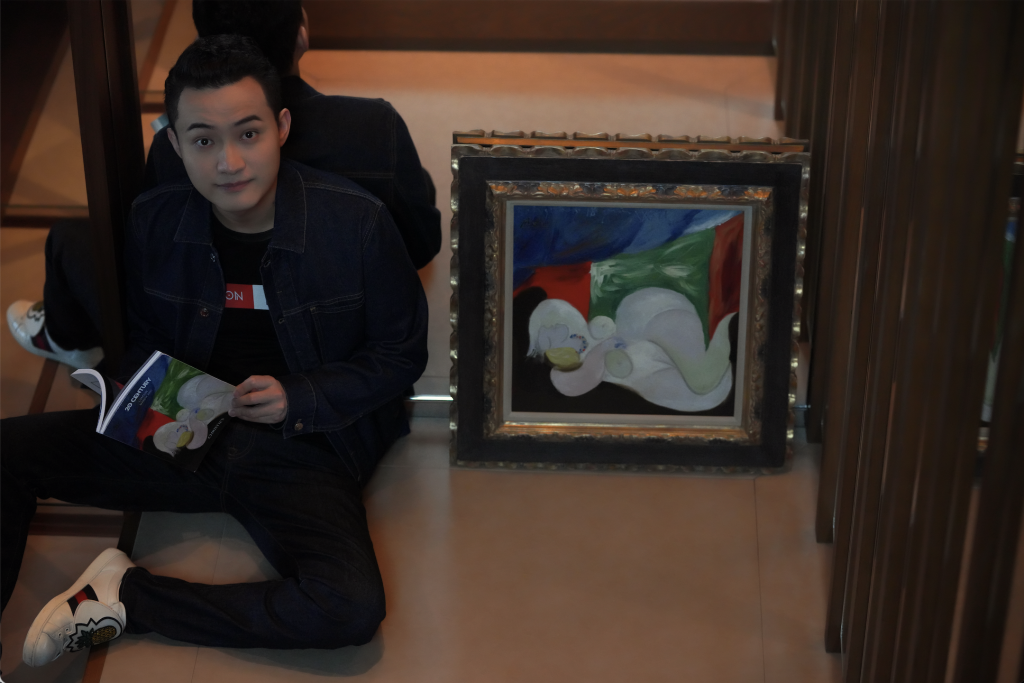
© » LARRY'S LIST
about 19 months ago (10/05/2022)
Artnet NFT's Jiayin Chen spoke to the billionaire entrepreneur about his engagement with the art world, and his thoughts on the future....

© » LARRY'S LIST
about 19 months ago (10/05/2022)
The collection’s owner, Maria Chen-Tu, has demanded the works’ return and alerted authorities in Beijing, but the works’ whereabouts remain unknown....

© » ARTS EQUATOR
about 25 months ago (04/08/2022)
Dalam Southeast Asia: At Home in the World | ArtsEquator Skip to content Alex Foo reviews the exhibition The Tailors and the Mannequins , featuring works by Singaporean artist Chen Cheng Mei and Cambodian artist You Khin...

© » ARTS EQUATOR
about 38 months ago (03/25/2021)
Cakap-Cakap: Interview with Serene Chen and Krish Natarajan | ArtsEquator Thinking and Talking about Arts and Culture in Southeast Asia Articles March 25, 2021 In the latest of our Cakap-Cakap series, ArtsEquator chats with Serene Chen and Krish Natarajan who star in Singapore Repertory Theatre (SRT)’s new play, The Sound Inside , written by by award-winning playwright Adam Rapp...

© » ARTS EQUATOR
about 42 months ago (11/26/2020)
Weekly Southeast Asia Radar: Protest art in Thailand; The productive pandemic | ArtsEquator Thinking and Talking about Arts and Culture in Southeast Asia ArtsEquator Radar Via Coconuts Bangkok November 26, 2020 ArtsEquator’s Southeast Asia Radar features articles and posts about arts and culture in Southeast Asia, drawn from local and regional websites and publications – aggregated content from outside sources, so we are exposed to a multitude of voices in the region...

© » ARTS EQUATOR
about 42 months ago (11/16/2020)
(Episode 1) What's in a Scene - 《大狗民》Citizen Dog by The Finger Players | ArtsEquator Skip to content In this episode, Liu Xiaoyi and Oliver Chong unpack a scene from The Finger Players 十指帮 ‘s 《大狗民》Citizen Dog and talk about the set design, costume design and more...

© » ARTNEWS CN
about 47 months ago (06/15/2020)
Photos: Chen Ronghui Captures China’s Youth – ARTnews.com ad...

© » ARTNEWS CN
about 47 months ago (06/15/2020)
Photographer Chen Ronghui is A Pivotal Figure in Chinese Art – ARTnews.com Skip to main content By Richard Vine Plus Icon Richard Vine Managing Editor, Art in America View All June 15, 2020 3:58pm View Gallery 6 Images Shanghai-based photographer Chen Ronghui’s principal theme—feeling displaced while still in place—resonates in unanticipated ways for today’s mid-pandemic viewers...
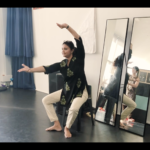
© » ARTS EQUATOR
about 47 months ago (06/08/2020)
The working processes of artists: Kavitha Krishnan | ArtsEquator Thinking and Talking about Arts and Culture in Southeast Asia Articles June 8, 2020 Kavitha Krishnan, creative director and co-founder of Maya Dance Theatre, shares about her start in the traditional dance form Bharatanatyam, and how she also incorporates contemporary techniques and practices into the company’s work...

© » HIGH FRUCTOSE
about 52 months ago (01/18/2020)
Toshio Saeki, the legendary Japanese artist known for blending eroticism, horror, and humor in his works, passed away in November at the age of 74...

© » ARTS EQUATOR
about 57 months ago (08/23/2019)
The working processes of artists: Nam Hwa Opera | ArtsEquator Thinking and Talking about Arts and Culture in Southeast Asia Articles August 23, 2019 In this video, LASALLE students Cherie Tan Yan Zhen and Lee Jia Jing speak to opera performer Chen Yu Zhi from Nam Hwa Opera, a Singapore-based Teochew opera troupe founded in 1963...

© » ARTS EQUATOR
about 58 months ago (07/24/2019)
Hitting the right (heart) notes: 10toONE by ONE Chamber Choir | ArtsEquator Thinking and Talking about Arts and Culture in Southeast Asia Articles Tan Zexun / Pandawithacamera July 24, 2019 By Shahril Salleh (932 words, 5-minute read) ONE chamber choir has a formidable reputation...

© » ARTS EQUATOR
about 62 months ago (04/08/2019)
Cloud Gate Dance Theatre of Taiwan: Between East and West, Heaven and Earth | ArtsEquator Thinking and Talking about Arts and Culture in Southeast Asia Articles Liu Chen-hsiang April 8, 2019 By Stephanie Burridge (800 words, four-minute read) Sustainability, remaining fresh and engaging is challenging in the present day, content-saturated global world...

© » ARTS EQUATOR
about 65 months ago (01/07/2019)
Video: The ArtsEquator End-of-Year Dance Podcast 2018 | ArtsEquator Thinking and Talking about Arts and Culture in Southeast Asia ArtsEquator Viewpoints January 7, 2019 ArtsEquator held a live recording of its year-end dance podcast at Dance Nucleus SCOPE #4 on Sunday 2 December 2018, 7pm...

© » ARTS EQUATOR
about 69 months ago (09/06/2018)
Podcast 47: TheatreWorks' "13.13.13" and SRT The Young Company's 'The Fall' | ArtsEquator Thinking and Talking about Arts and Culture in Southeast Asia ArtsEquator Viewpoints September 6, 2018 Duration : 33 mins Theatreworks’ 13.13.13 and SRT’s The Young Company’s The Fall are the two works discussed in this month’s podcast...

© » ARTS EQUATOR
about 71 months ago (06/29/2018)
"Framed, by Adolf": Truth as Shadow-Play | ArtsEquator Thinking and Talking about Arts and Culture in Southeast Asia Articles Tuckys Photography June 30, 2018 By Akanksha Raja (850 words, six-minute read) In Framed, by Adolf , playwright-director Chong Tze Chien’s fascination with Adolf Hitler and the Holocaust continues from 2016’s Starring Hitler as Jekyll and Hyde , which explored the idea of the dictator as a failed artist...

© » ARTS EQUATOR
about 71 months ago (06/27/2018)
M1 Open Stage + DiverCity - Contact Contemporary Dance Festival Thinking and Talking about Arts and Culture in Southeast Asia Articles June 27, 2018 This year, with an increased number of international programme collaborators, M1 Open Stage features innovative and exhilarating works by a diverse range of dance artists over two nights...
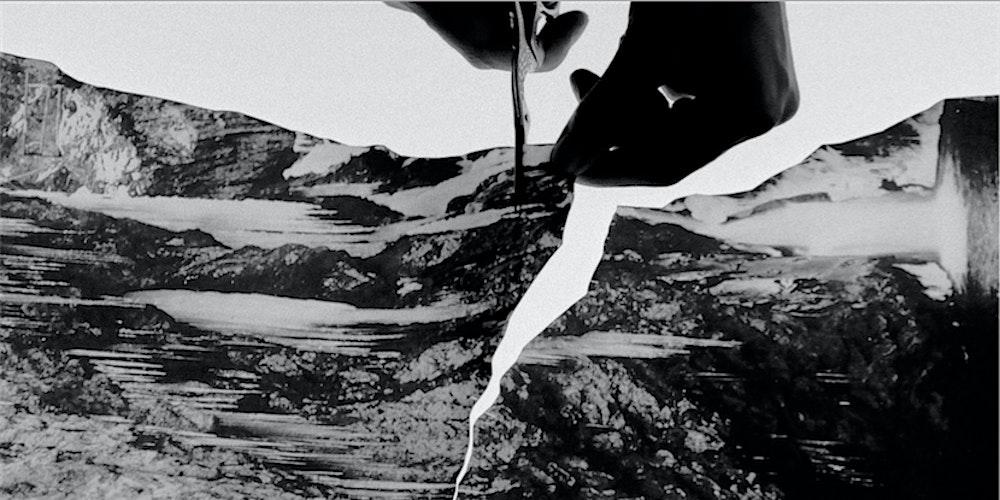
© » ACAW
about 82 months ago (08/17/2017)
Saturday, October 14th, at Asia Society Museum- Sunday, October 15th at SVA Theatre Thanks for your interest in registering for FIELD MEETING Take 5: Thinking Projects, an exclusive two-day forum for arts professionals (curators, scholars, museum directors, artists, students & members of the press), with limited seating open to the general public...

© » ARTNEWS CN
about 124 months ago (03/03/2014)
Invisible Ink – ARTnews.com Skip to main content By Richard Vine Plus Icon Richard Vine Managing Editor, Art in America View All March 3, 2014 2:10am View Gallery 6 Images “ Ink Art: Past as Present in Contemporary China ,” now at New York’s Metropolitan Museum of Art , seems at first to be a long-awaited corrective to Western myopia in regard to Chinese ink painting and calligraphy...
-
2000-2009
Chen Shaoxiong
2006After engaging primarily with video and photography for more than a decade, Chen turned to painting to explore the issue of urban change and memories—both personal and collective...
Xiaoyun Chen
2006The image of rusted nails, nuts and bolts as shrapnel sandwiched between a fried Chicken burger highlights the contrast between decadence and destruction...
Xiaoyun Chen
2006State Terrorism in the ultimate form of Pre-Raphaelite Brotherhood features a portrait of the artist wearing a zipped utilitarian jacket reminiscent of a worker’s uniform, with one arm behind his back as if forced to ingest a bundle of stick—a literal portrayal to the definition of fascism...
Chen Shaoxiong
2007After engaging primarily with video and photography for more than a decade, Chen turned to painting to explore the issue of urban change and memories—both personal and collective...
Wong Wai Yin
2008In this work the artist stages a humorously violent “intervention” against male-dominated cultures of art production in present-day China...
-
2010-2019
Chen Chieh-Jen
2010Empire’s Borders II – Passage and Empire’s Borders II – Workers are from the three-channel film installation Empire’s Borders II – Western Enterprise, Inc...
Chen Chieh-Jen
2010Empire’s Borders II – Passage and Empire’s Borders II – Workers are from the three-channel film installation Empire’s Borders II – Western Enterprise, Inc...
Yin-Ju Chen
Drawing & Print
2011(Drawing & Print) This work includes sketches for Extrastellar Evaluations , the project she produced at Kadist...
Hong-Kai Wang
2011The video Music While We Work (2011) is the first part/work of a long-term research project started in 2010...
Xiaoyun Chen
2012The lengthy titles in Chen Xiaoyun’s work often appear as colophons to his photographs that invite the viewer to a process of self realization through contemplating the distance between word and image...
Yangjiang Group
Drawing & Print
2012(Drawing & Print) One Day in the Mountain is a bilingual calligraphic performance piece written in ink superimposed with food leftover from a meal...
Xiaoyun Chen
2014The central point of Vanishing Point is the most direct physiological reaction of the body to the environment...
Mimian Hsu Chen
2014In Hsu’s work, Colonia China (2014), the artist documents a Chinese cemetery of Costa Rica’s Limón Province, along the country’s Caribbean coast...
Yin-Ju Chen
2016Through a semi-fictional approach, Extrastellar Evaluations envisions a version of history in which alien inhabitants, the Lemurians, lived among humans under the guise of various renowned conceptual and minimal artists in the 1960s (Carl Andre, Mel Bochner, and James Turrell to name a few)...
I-Hsuen Chen
Drawing & Print
2016(Drawing & Print) Part of the series Still Life Analysis II: The Island , the two photographs The Objects under the Civic Boulevard and A Yellow Blanket on a Wooden Pallet feature household objects of vagrants living beneath the Taipei’s Civic Boulevard expressway...
Yin-Ju Chen
2018Extrastellar Evaluations is a multimedia installation produced during Yin-Ju Chen’s residency at Kadist San Francisco in the spring of 2016...
Seulgi Lee
2018The Korean title for U: Repair the cowshed after losing the cow = Too late is —a famous Korean proverb meaning “you are doing something when you are already late to do it”...
-
2020-2029
Wong Wai Yin
2021Drawn from the widely circulated images of protests around the world in support of women rights and racial equality, the phrase I can’t believe we are still protesting is both the title of Wong Wai Yin’s photographic series and a reference to similar messages seen on protest signages...
Wong Wai Yin
2021Drawn from the widely circulated images of protests around the world in support of women rights and racial equality, the phrase I can’t believe we are still protesting is both the title of Wong Wai Yin’s photographic series and a reference to similar messages seen on protest signages...
Wong Wai Yin
2021Drawn from the widely circulated images of protests around the world in support of women rights and racial equality, the phrase I can’t believe we are still protesting is both the title of Wong Wai Yin’s photographic series and a reference to similar messages seen on protest signages...
Wong Wai Yin
2021Drawn from the widely circulated images of protests around the world in support of women rights and racial equality, the phrase I can’t believe we are still protesting is both the title of Wong Wai Yin’s photographic series and a reference to similar messages seen on protest signages...
Chen Zhexiang
2021In the video work Any Resemblance is Coincidental , CHEN Zhexiang mined portraits of real Asian criminals that were abandoned on the Internet...
